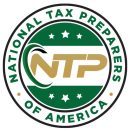The IRS makes its rounds every year to collect taxes on all levels including federal, state and local. The amount of taxes we incur is known as the tax liability. Tax liability is the total amount of tax debt owed by an individual, corporation, or other entity to a taxing authority like the Internal Revenue Service <www.investopedia.com/terms/i/irs.asp> (IRS). Tax liabilities are incurred when income is earned, there is a gain on the sale of an asset, or another taxable event occurs.
An individual’s or corporation’s tax liability doesn’t only include the current year but also any and all years for which taxes are owed. That means that if there are back taxes <www.investopedia.com/terms/b/back-taxes.asp> (any taxes that remain unpaid from previous years) due, those are added to the tax liability as well.
Your total tax liability is the total amount of tax you owe from liabilities like income tax, capital gains tax, self-employment tax, and any penalties or interest. These are all types of Tax Liabilities.
1.Sales tax
When a business sells a product, most state and local governments charge sales tax as a percentage of the total sale. This amount is included in the total charged to customers.
2.A capital gains tax
It is a tax on the growth in value of investments incurred when individuals and corporations sell those investments. When the assets are sold, the capital gains are referred to as having been “realized <www.investopedia.com/terms/r/realizedprofit.asp>.” The tax doesn’t apply to unsold investments or “unrealized capital gains <www.investopedia.com/terms/u/unrealizedgain.asp>,” so stock shares <www.investopedia.com/terms/s/shares.asp> that appreciate every year will not incur capital gains taxes until they are sold.
3.Self-employment tax
Self-employed individuals generally must pay self-employment tax (SE tax) along with a separate income tax. Before you can determine if you are subject to self-employment tax and income tax, you must figure your net profit or net loss from your business. You do this by subtracting your business expenses from your business income. If your expenses are less than your income, the difference is net profit. If your expenses are more than your income, the difference is a net loss.
·Zero Tax Liability
There are instances where one’s total tax was /zero/ or one didn’t have to file an income tax return for the previous year, yielding a zero tax liability. You may not have had to file an income tax return for the prior tax year if your gross income was below a certain threshold.For this exception to apply, two additional requirements must be met:
1.Your prior tax year was a taxable year of 12 months.
2.You were a citizen or resident of the United States throughout your prior tax year.
The different types of taxes and the amount of taxes one owes is essential to be calculated to utmost accuracy and with a headstrong consistency each month. Tax liability thus ensures that we carry out our civic duty with persistence every year.




